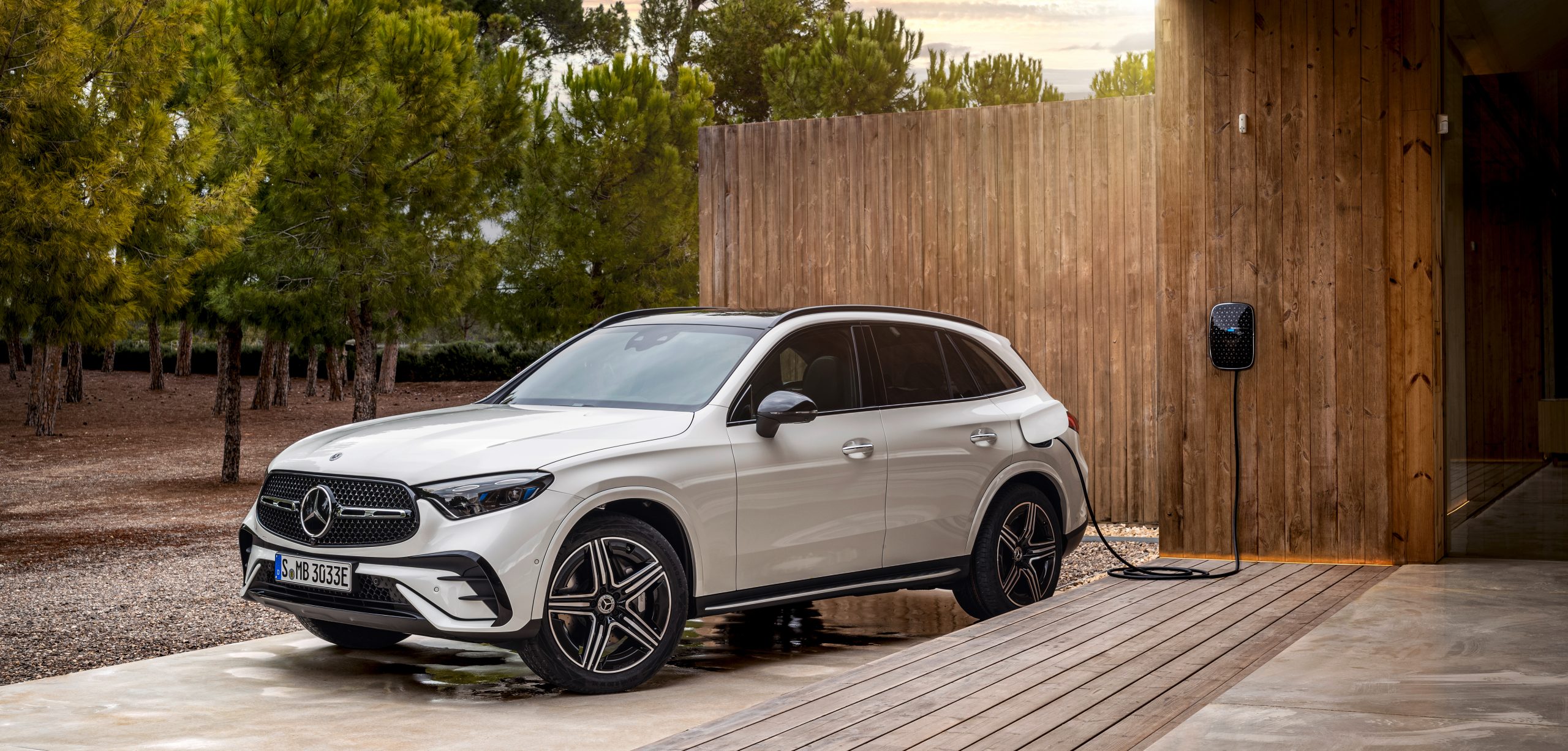On June 2nd, the all-new generation of Mercedes-Benz GLC was officially released, with a very similar exterior and interior design to the all-new generation of Mercedes-Benz C-Class sedan, which was within expectations. The powertrain is consistent with the current model, with diesel and gasoline versions available overseas, and a newly introduced GLC plug-in hybrid version this time.
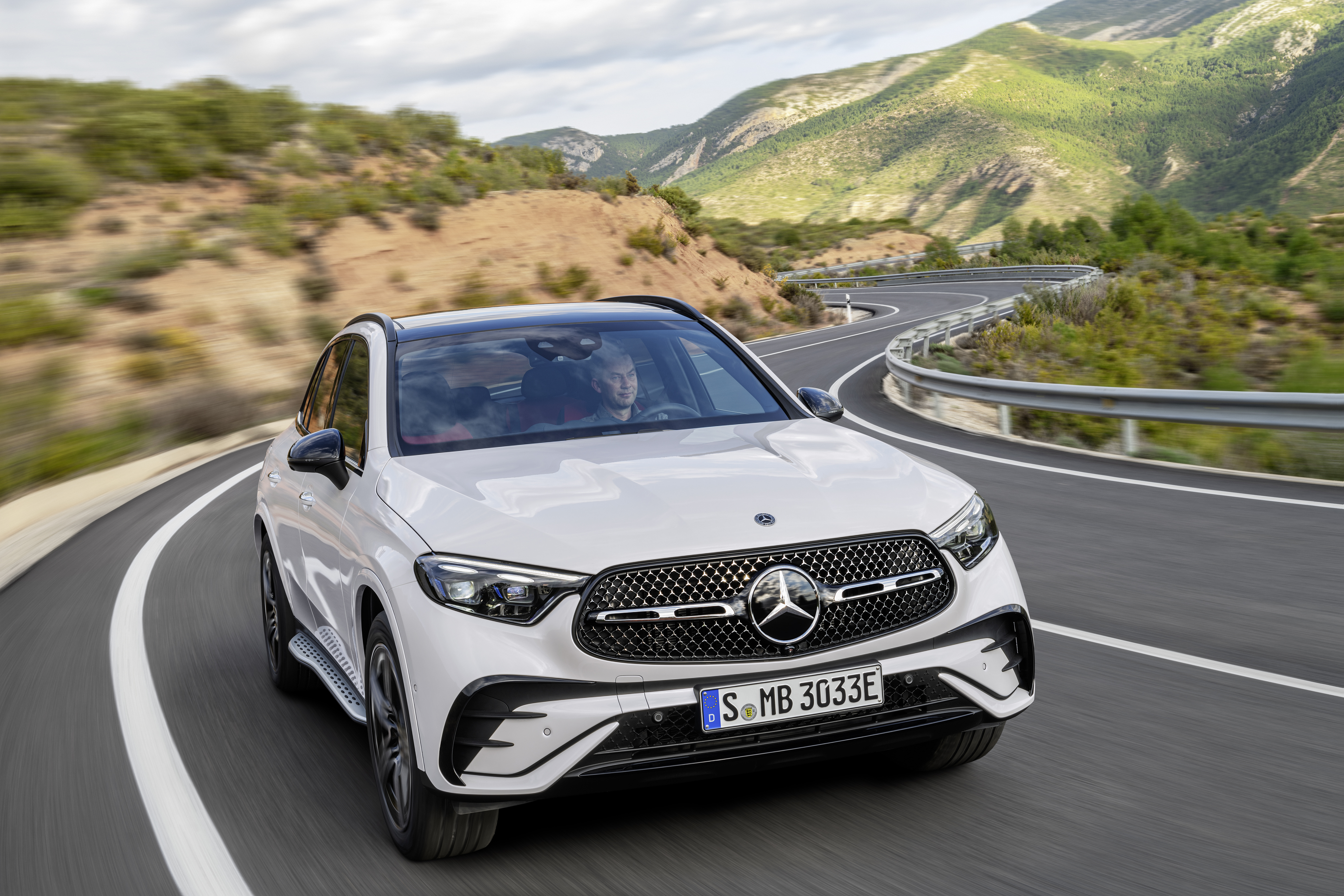
In terms of exterior design, the all-new GLC has two types of bumper kits, one is the youthful and sporty AMG styling kit, and the other is the classic off-road style bumper kit.
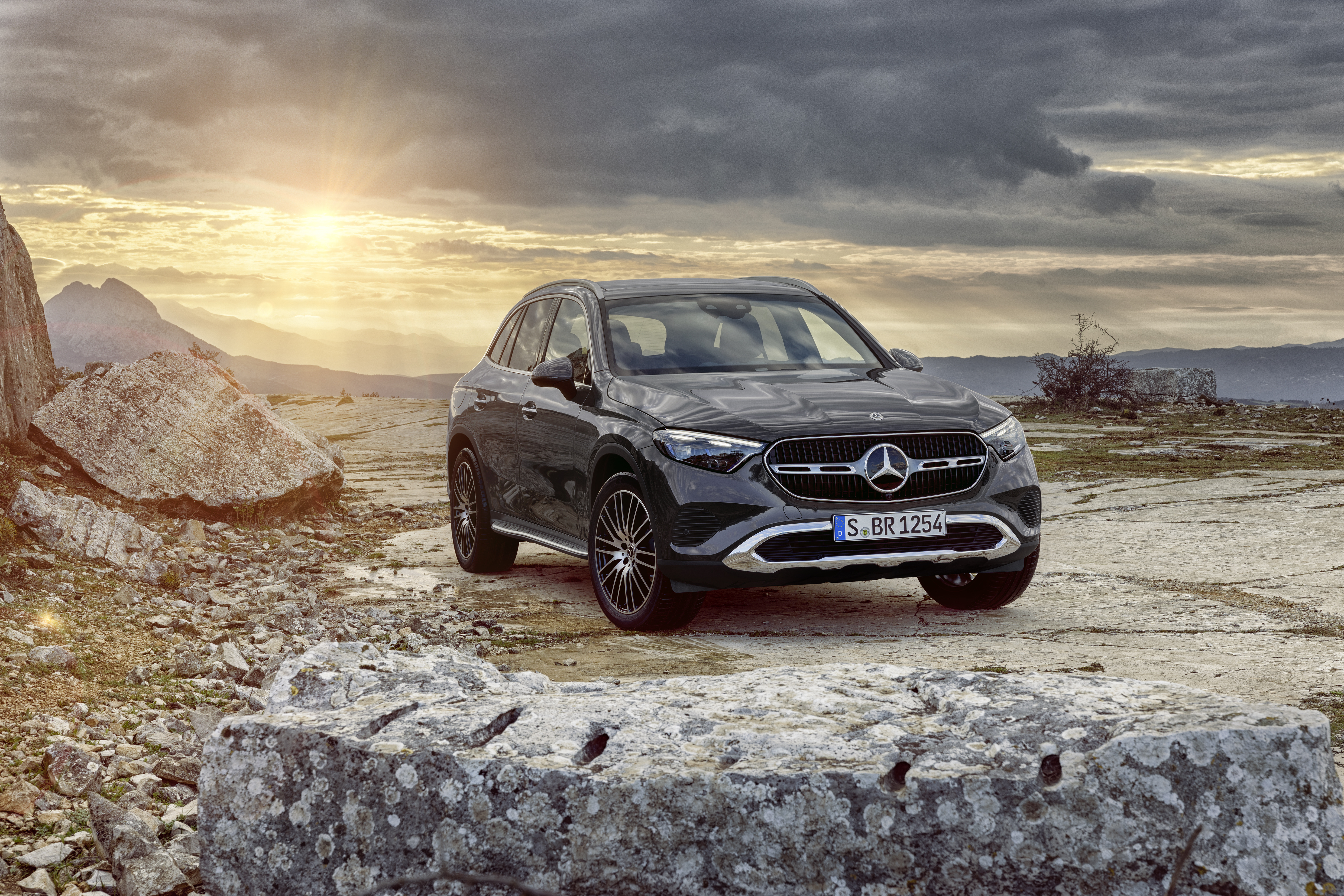

The style of the headlights and taillights is very similar to the currently available all-new generation of C-Class, to the extent that it can be said to be cut from the same mold, and at first glance, it can be seen that this is a GLC rather than a GLB or a GLA.
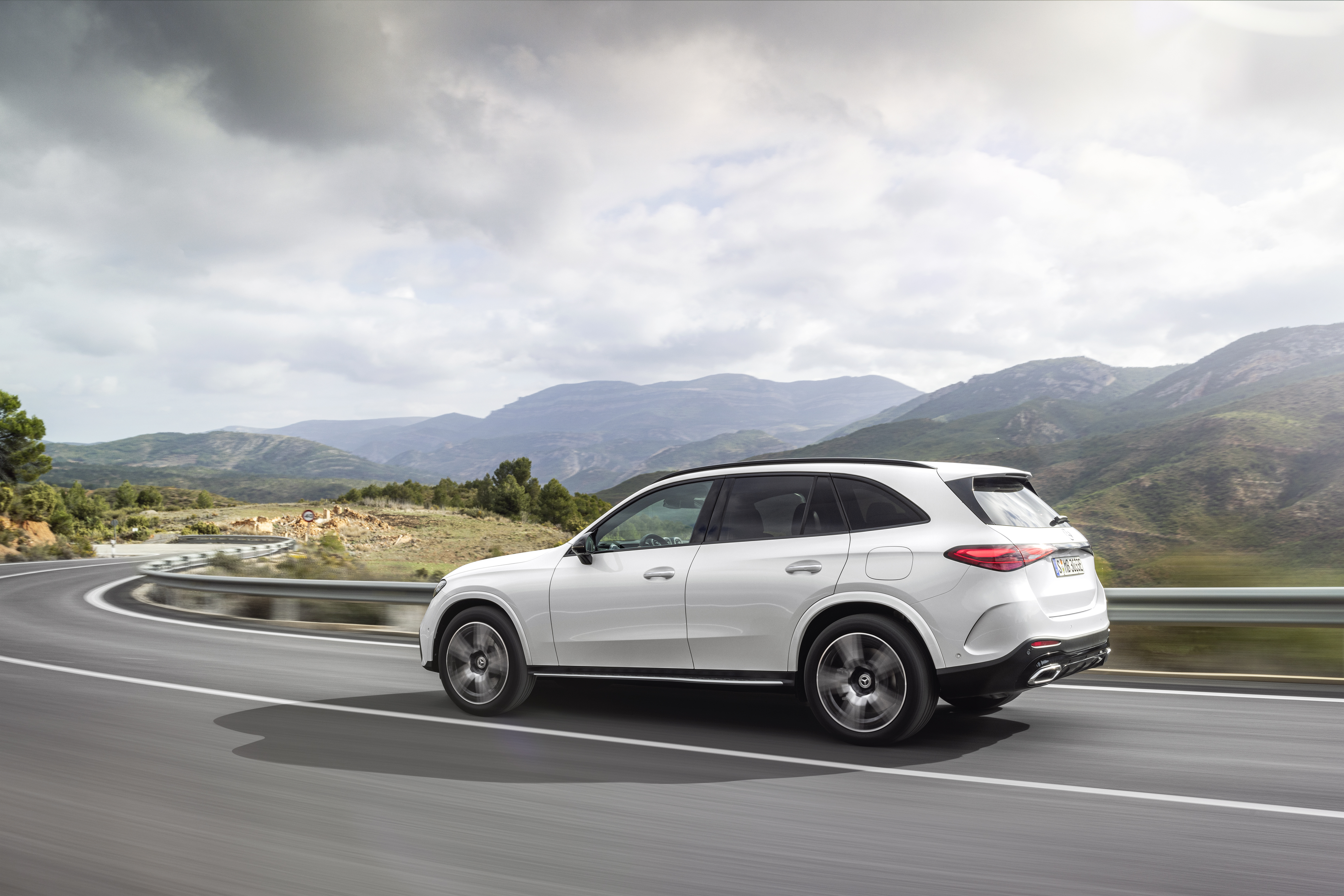
In terms of interior design, we can even play a game of spot the differences between the GLC and the C-Class, at least I did not see any obvious differences between the two.
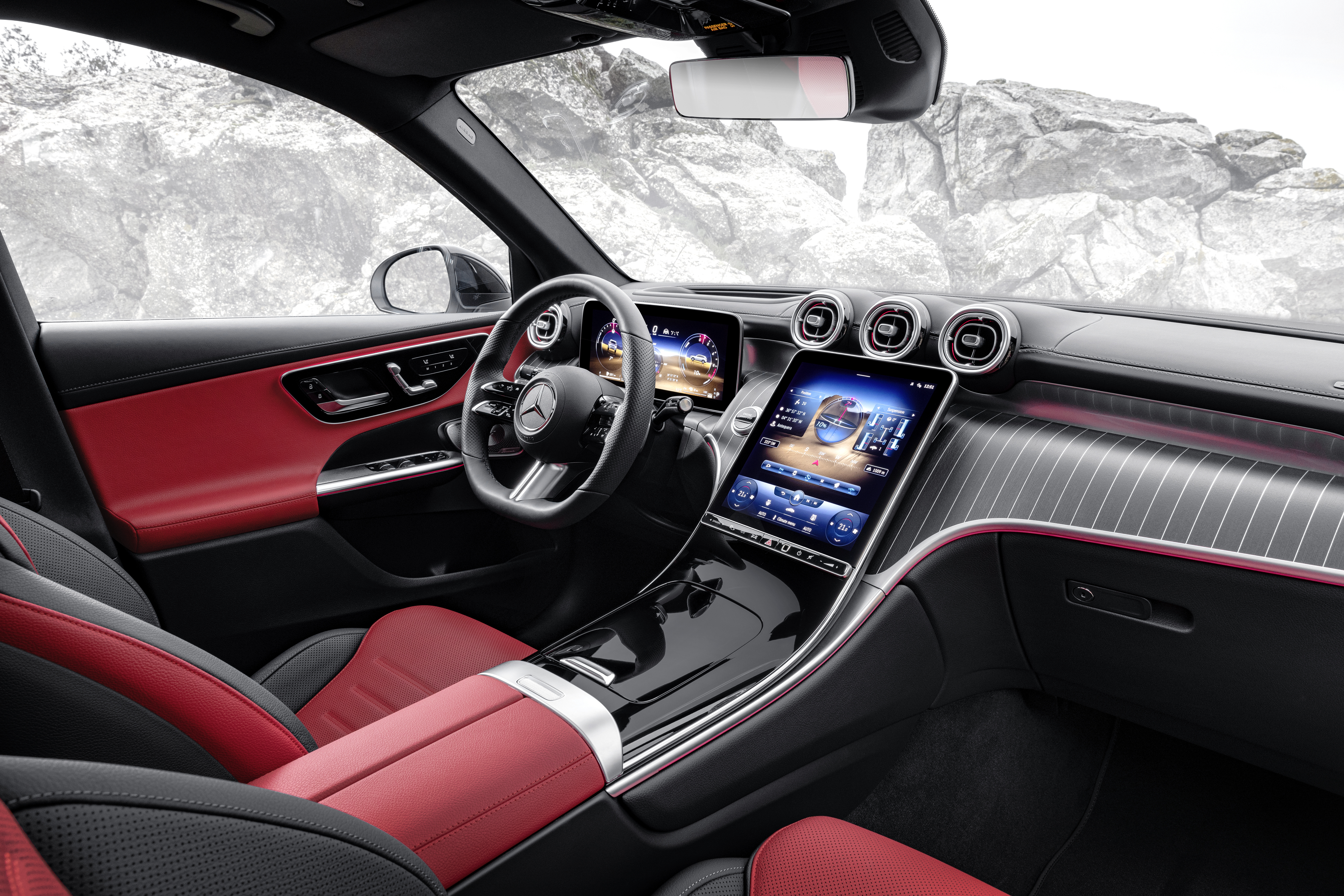
GLC
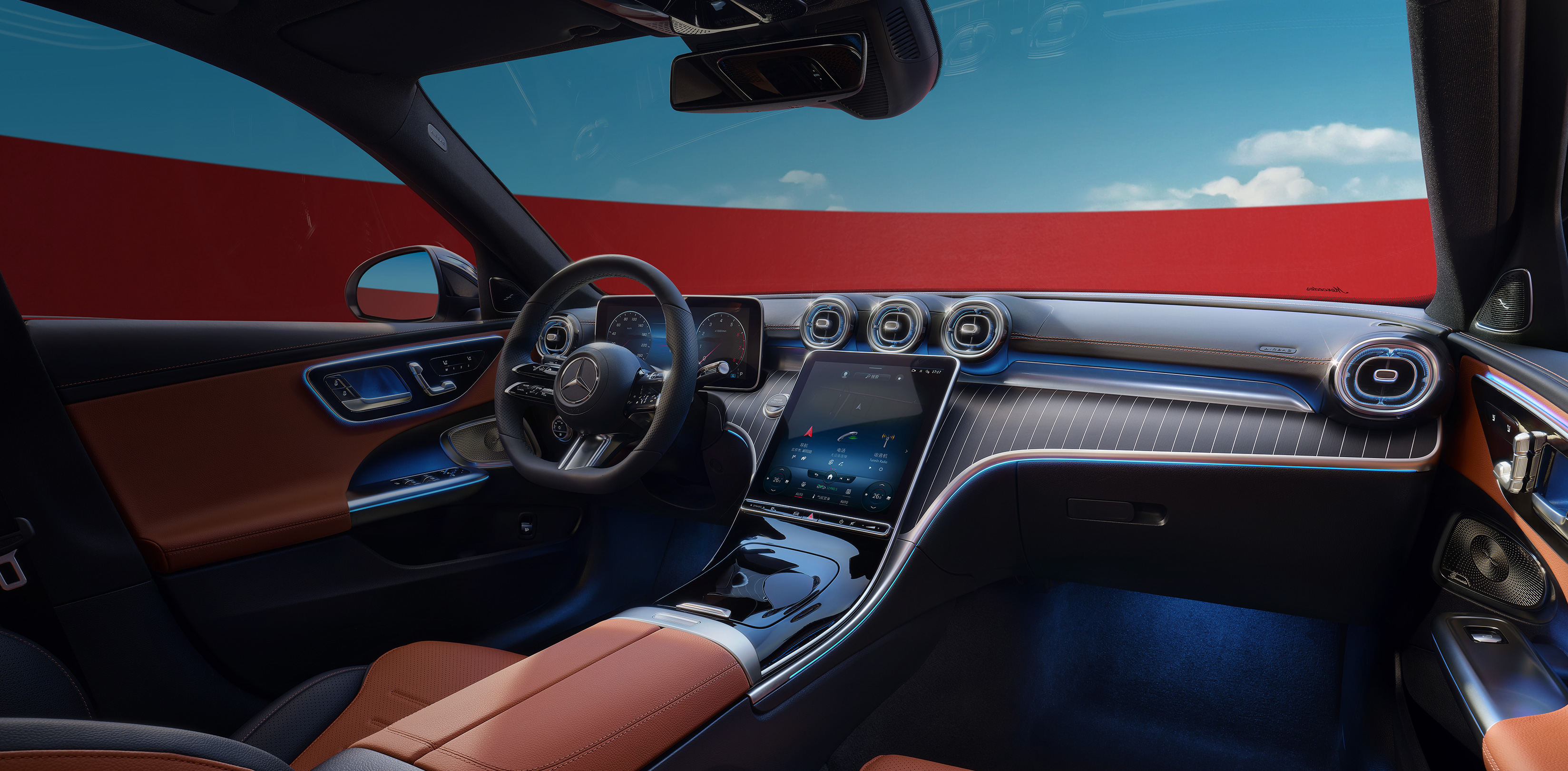
C-Class sedan
It is worth noting that the content displayed on the HUD screen is very rich, and can almost replicate the entire instrument panel.

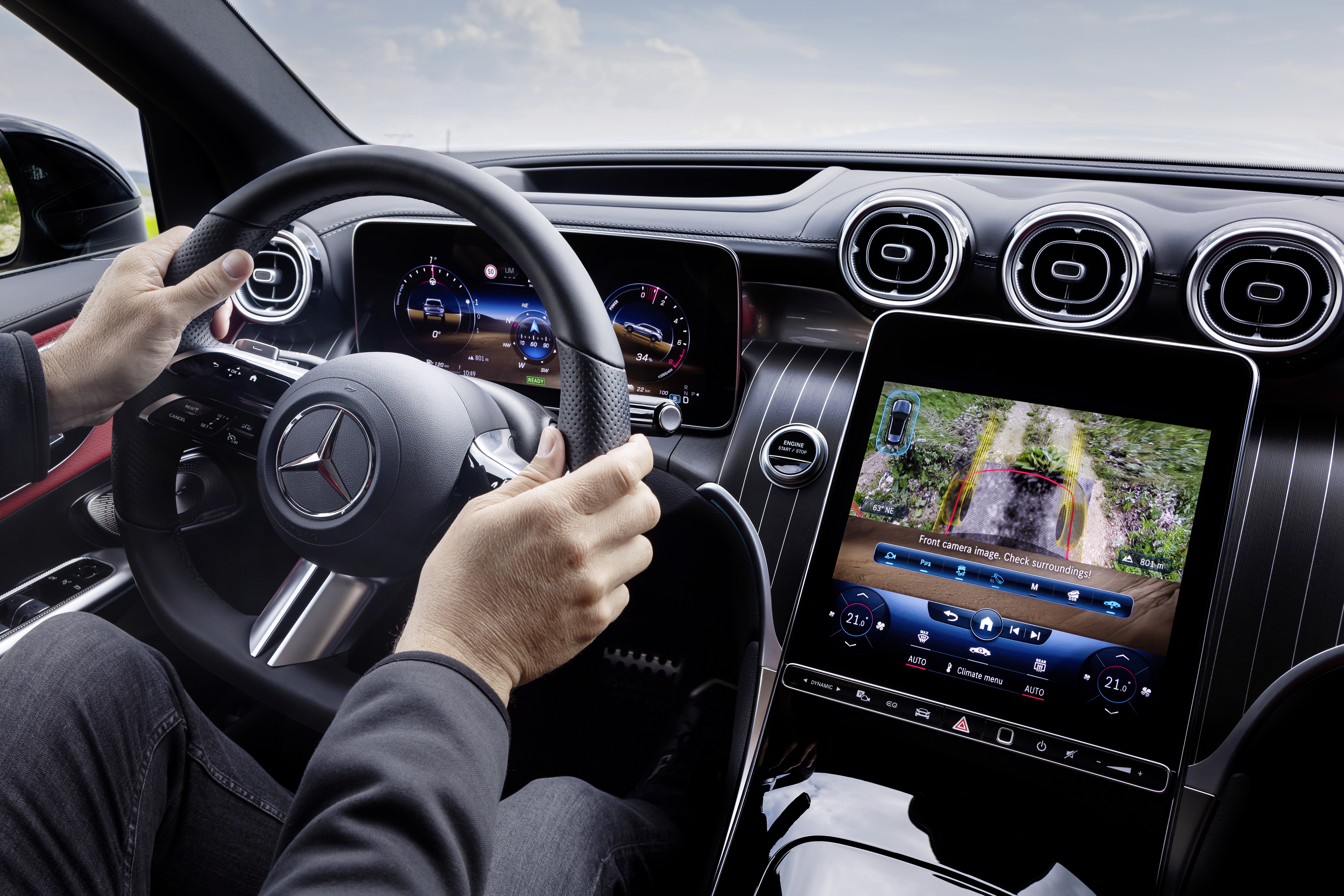 In terms of powertrain, the main upgrade for this generation of GLC is the plug-in hybrid system. All GLC models are equipped with four-wheel drive, and the fuel version replaces the long-standing criticized BSG motor with an ISG motor, which theoretically results in smoother transition with the engine.
In terms of powertrain, the main upgrade for this generation of GLC is the plug-in hybrid system. All GLC models are equipped with four-wheel drive, and the fuel version replaces the long-standing criticized BSG motor with an ISG motor, which theoretically results in smoother transition with the engine.
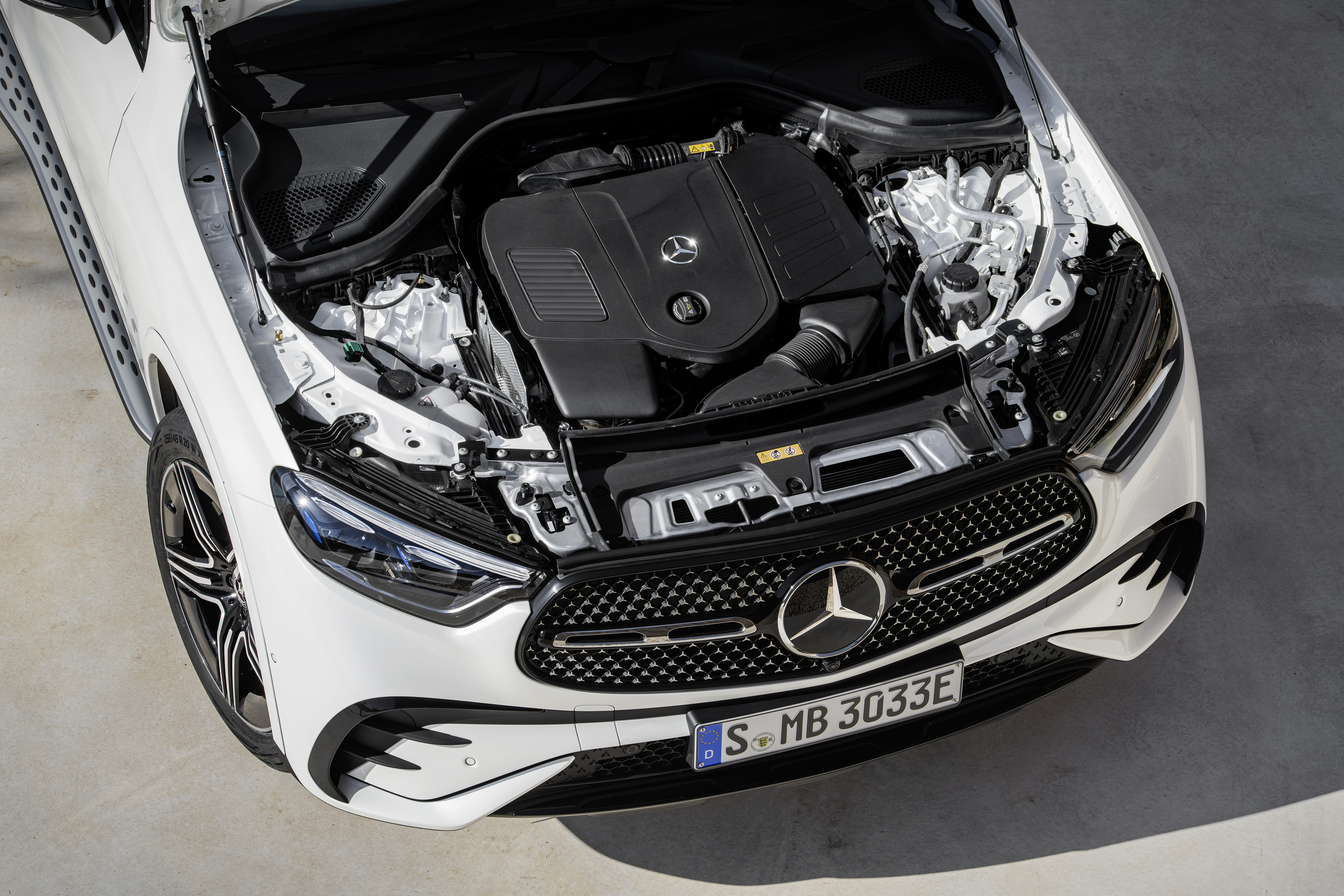
The plug-in hybrid version also uses the same 2.0T engine, with a maximum output power of 280 kW and a maximum torque of 750 N·m when combined with the electric motor.
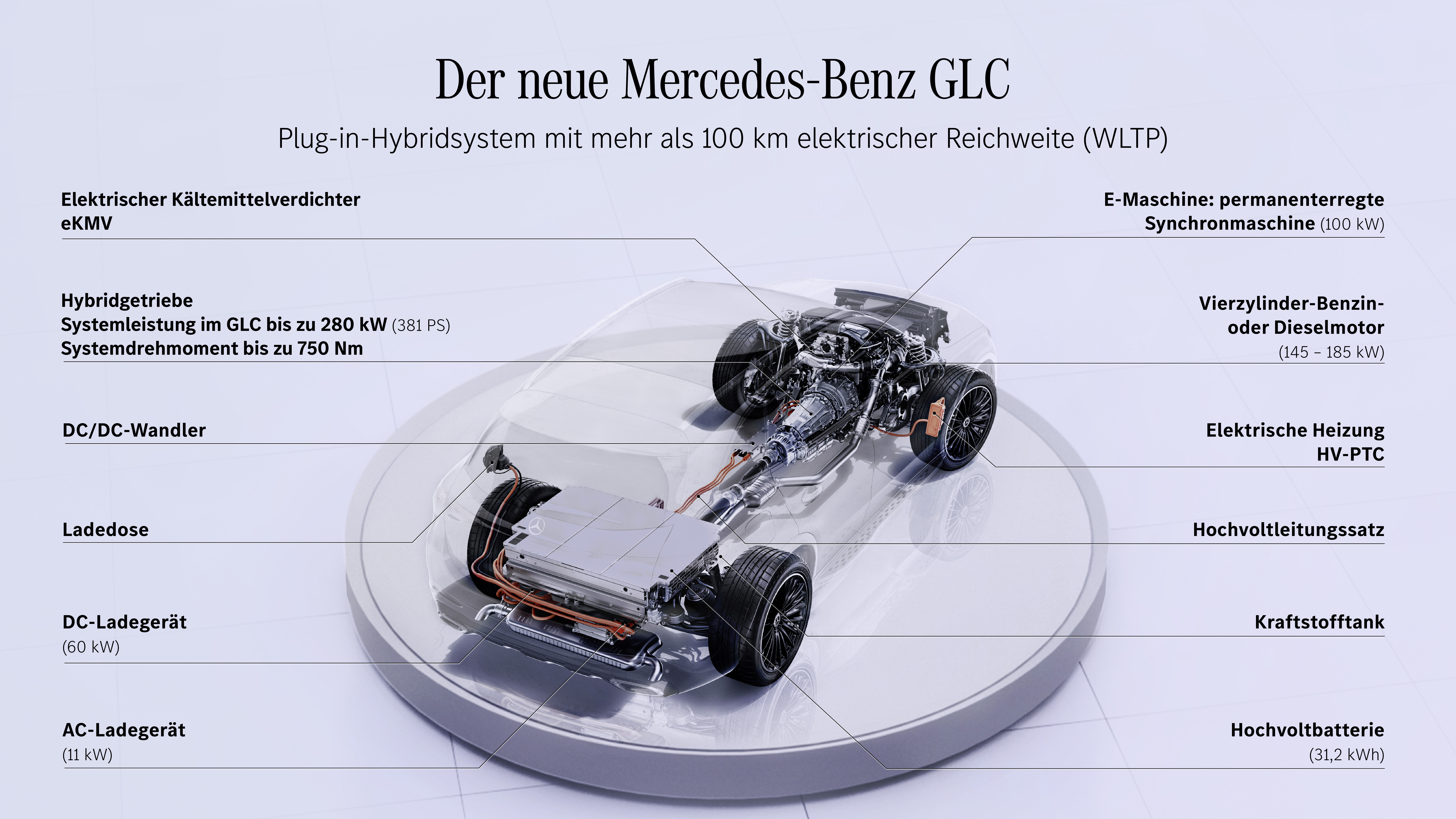
Due to the difference between the domestic and overseas versions, it is expected that the fuel version of GLC will still use the 260 and 300 end numbers, while the plug-in hybrid version is expected to use the 350e end number.
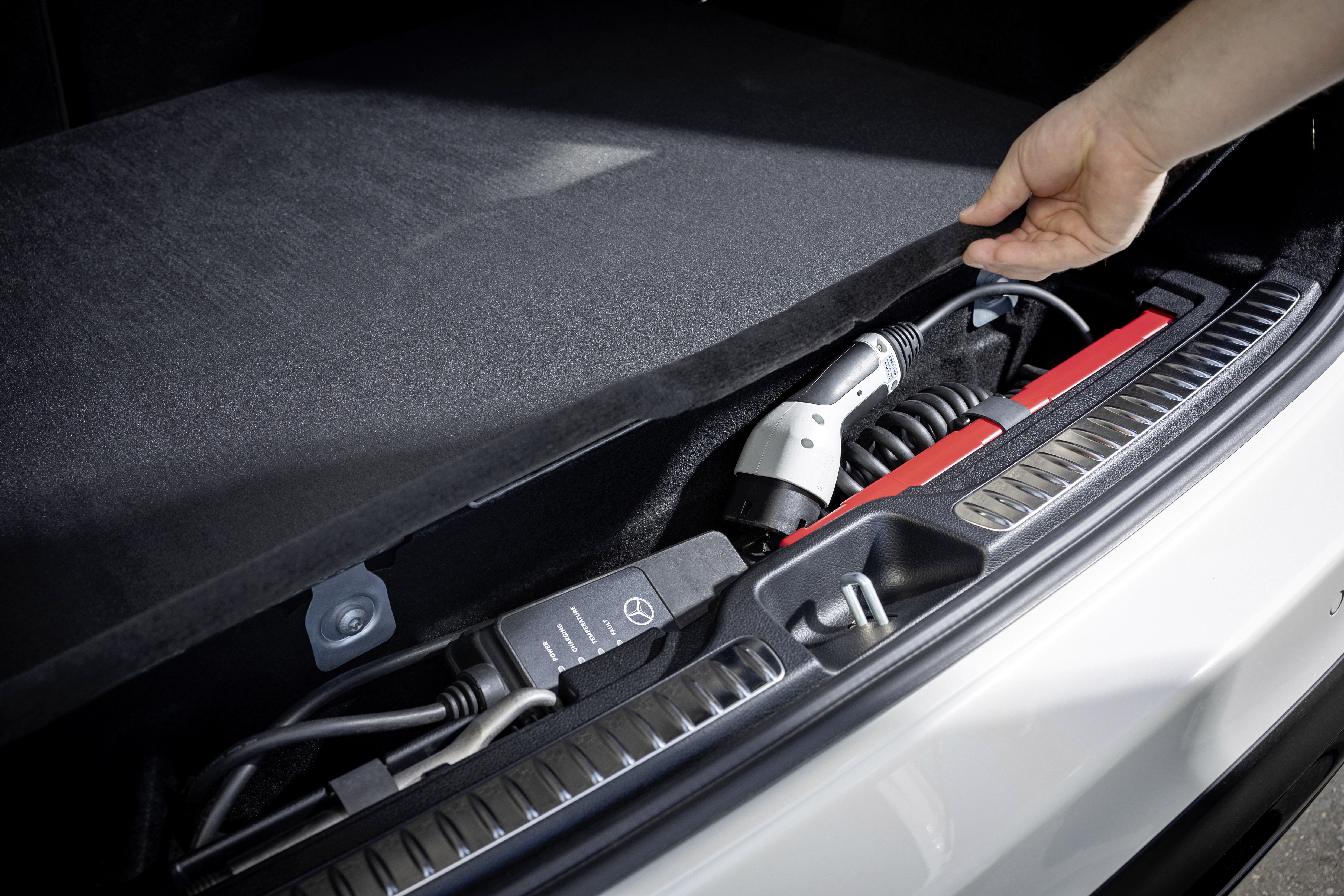
The PHEV GLC is equipped with a 31.2 kWh battery pack, with the support of 60 kW DC fast charging and 11 kW AC charging. A set of portable charging devices will also be included with the car. For PHEVs, having a DC charging port is very practical in the domestic environment. Under pure electric driving, the motor can provide 100 kW and 440 N•m of power, with a pure electric range of up to 100 km under the WLTP standard.
Although it is currently unknown when the GLC PHEV will be launched in the domestic market, we can expect that the new generation plug-in hybrid C-Class, which is currently listed on the MIIT’s declaration list with an end number of C350 eL, may meet us sometime this year.
 As for the assisted driving, GLC still uses the solution of binocular cameras and millimeter-wave radar. During driving, it can also call up the 360-degree parking image to achieve a deep perception of the surroundings. In terms of functions, it supports level 2 assisted driving, and higher-level assisted driving has not yet appeared in GLC. Fortunately, Mercedes’ basic driving assistance capabilities are still noteworthy. According to Mercedes’ official statement, AEB on the all-new GLC can achieve a terrifying 100 km/h while facing a stationary vehicle (previously 60 km/h).
As for the assisted driving, GLC still uses the solution of binocular cameras and millimeter-wave radar. During driving, it can also call up the 360-degree parking image to achieve a deep perception of the surroundings. In terms of functions, it supports level 2 assisted driving, and higher-level assisted driving has not yet appeared in GLC. Fortunately, Mercedes’ basic driving assistance capabilities are still noteworthy. According to Mercedes’ official statement, AEB on the all-new GLC can achieve a terrifying 100 km/h while facing a stationary vehicle (previously 60 km/h).
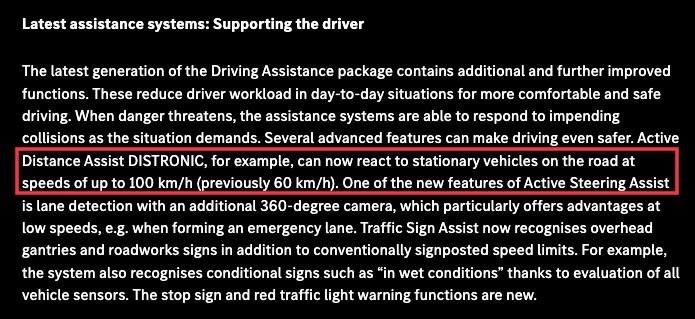
For lane keeping, it can also call up the 360-degree camera as a surrounding perception to assist in lane detection, enhancing the lane keeping experience in low-speed situations.
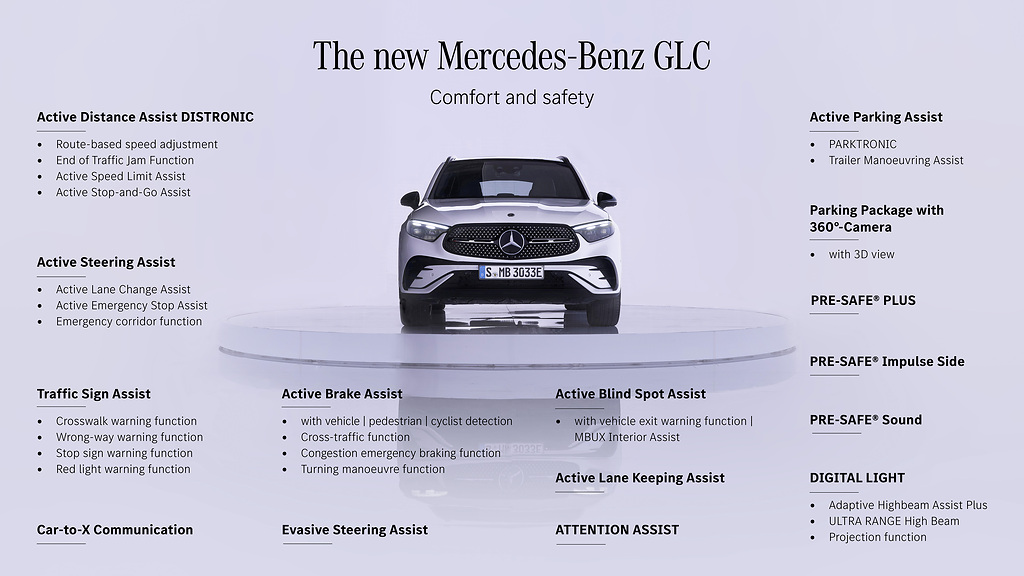
For this set of assisted driving functions of GLC, I am still a bit looking forward to them. I’m not sure if it needs to be optional after entering China, and whether it will still provide long-wheelbase models to compete with X3 and Q5L is also worth looking forward to. Speaking of which, the all-new GLC is already here, will the new EQC be far behind?
Source: Mercedes official
This article is a translation by ChatGPT of a Chinese report from 42HOW. If you have any questions about it, please email bd@42how.com.
